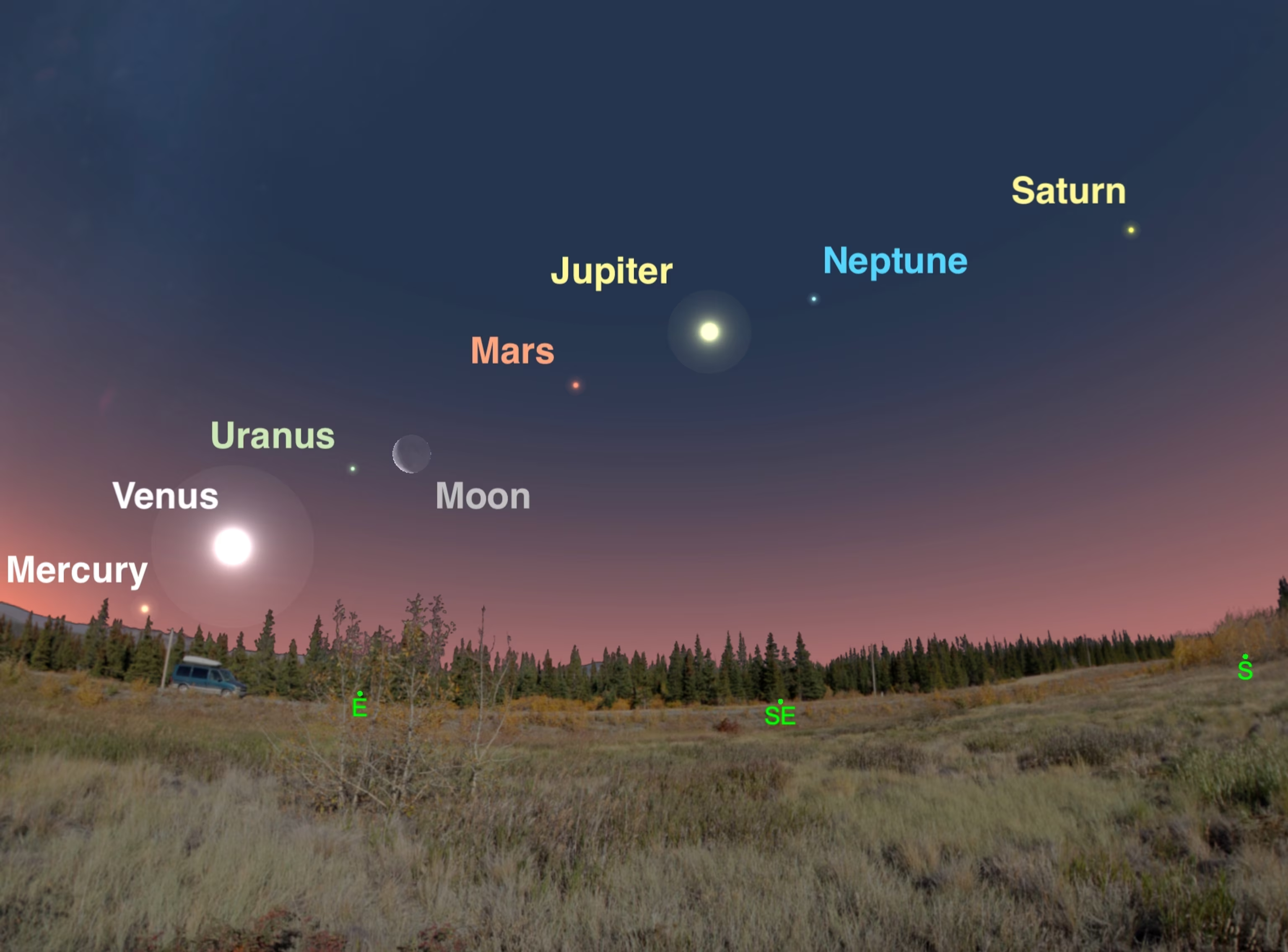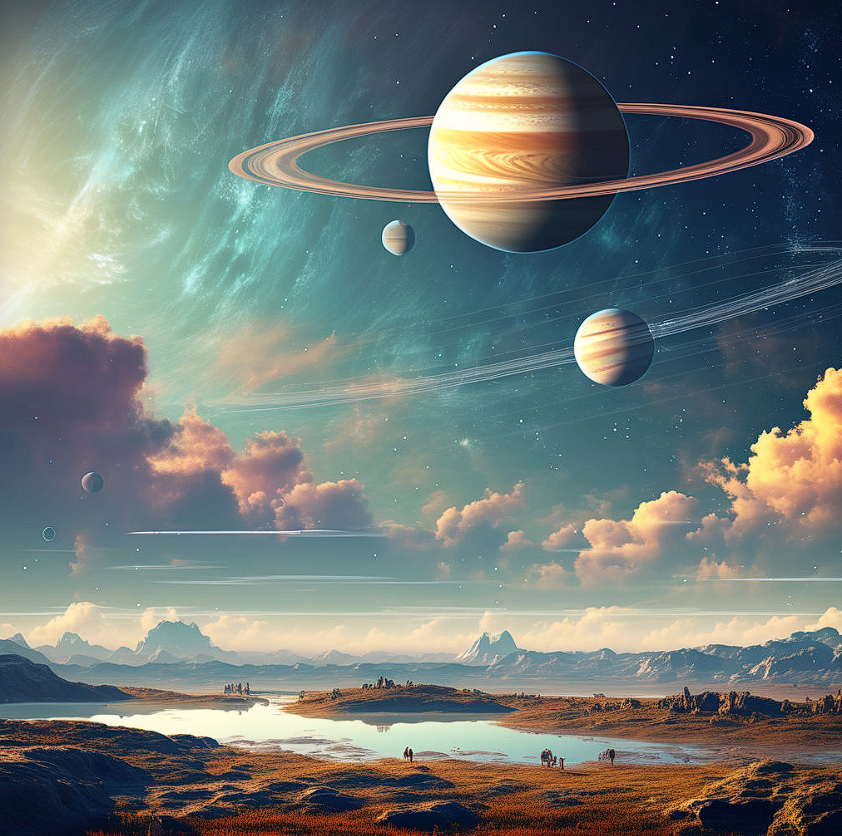|

There has always been awe and fascination among humans at the sight of the starry sky above. For generations, people have been intrigued by the night sky and everything it has to offer: from constellations to meteor showers and beyond. Those with an interest in astronomy should not pass up the chance to see planets in the night sky. Many planets, from the red planet Mars to the gas giant Jupiter, are visible to the naked eye if you know where and when to look.
Between the timeless fascination with the heavens and the practical steps to enjoying its wonders, there lies a bridge of knowledge and preparation. Observing the planets is not just a matter of looking up; it requires a bit of know-how about the best times for viewing, understanding the planets' positions in the sky, and perhaps even using some basic equipment like binoculars or a telescope. This moment of preparation—learning to identify the planets and finding the perfect night for stargazing—transforms a simple glance upwards into a meaningful exploration of the cosmos. It’s here, in this blend of anticipation and education, that our journey to discover the night sky truly begins.
We'd like to recommend that you check out the observable planets at night and provide some pointers on how to do so successfully. Now, unwind, as we take a trip across space and time together.
The Planets to Look Out For
Mercury, the planet closest to the Sun, is the first stop on our tour of the solar system. Mercury, being so close to the Sun, is only visible shortly before sunrise and shortly after sunset. Look for a bright starlike object very low on the horizon, and you may have found this elusive planet. It's possible Mercury is the culprit.
The next planet on our itinerary is Venus, which is less difficult to identify. Venus, also called the "Morning Star," can be seen in the eastern sky shortly before sunrise and in the western sky just after sunset. After the Moon, it's the brightest thing in the sky, and it's easy to confuse it for a passing plane or an alien spacecraft.
Mars, known for its distinctive red hue, is visible to the unaided eye at specific periods of the year. Redder and brighter than most stars in the sky, this object resembles a star.
One of the brightest objects in the night sky, Jupiter is easily seen even without a telescope thanks to its four biggest moons. It will look like a blazing star, and its moons will be pinpoints of light orbiting it.
The distinctive rings of Saturn make it an instantly recognizable planet. Saturn itself should still be visible with unaided eyes, but viewing the rings in detail will require binoculars or a telescope.
The planets Uranus and Neptune are the seventh and eighth in order of distance from the Sun. They are so far away from our planet that they can only be seen as very dim dots in the night sky. They are often not as easily visible as the other planets described above and might be difficult to spot without the use of binoculars or a telescope.

Tips for Observing Planets
Seeing planets can be hard, especially if you don't usually look up at the night sky. Here are some suggestions to help:
- Choose the right time. The best times to view the planets are late at night or early in the morning. Before beginning your observation, be sure to look up the local sunset and sunrise times.
- Find a dark place. Locate a dark sky viewing area, as light pollution can obscure the stars and planets. If you want to see the planets clearly, it's best to do so from a spot far from any nearby cities or towns.
- Check the weather. Make sure you pick a night with little cloud cover by checking the forecast. Because clouds can obscure the planets' appearance, the ideal time to observe them is on a moonless night.
- Use a star chart or a stargazing app on your phone. Make yourself familiar with the night sky by studying a star chart or an app made for stargazing on your smartphone, which will show you where the planets are at any given time. The planets and their positions in the sky in relation to other stars can be determined with the aid of such instruments.
- Use a telescope or binoculars. Some planets can be seen with the naked eye, but a better experience can be had using binoculars or a telescope. They improve clarity, revealing features like Jupiter's moons and Saturn's rings. Think about getting your hands on a high-quality telescope, or at least trying to borrow one.
- Let your eyes adjust. Give your eyes a few moments to acclimate to the dark when you first enter a new environment. You'll lose some of your capacity to see faint objects in the sky if you look at a bright light or screen for even a few minutes.
- Use low magnification. Start with the lowest magnification setting on your telescope. The image can become darker and more affected by atmospheric turbulence with higher magnifications. Once the planet has been located, the magnification can be increased for a better look.
- Be patient. Try to keep calm and patient if you're trying to find a planet in the sky. Look at the sky in a methodical fashion. Finding a planet will unlock a wonderful panorama.
The Best Night of the Year to Look Up
The best night to look at the stars and sky relies on many things, such as where you live, what's happening in the sky right now, and your own preferences. But there are a few nights and events that stargazing fans look forward to every year. Here are just a few:
Perseid Meteor Shower. The annual Perseid meteor shower typically peaks around the middle of August. It is one of the best-known meteor showers because of the abundance and brilliance of the meteors that fall during it. The most active night of the meteor shower occurs between August 11th and 13th. This is a great time to go stargazing because the sky may be littered with meteors.
Geminid Meteor Shower. The Geminid meteor shower, which occurs every year around the middle of December, is another stunning event. It has a high rate of meteor activity and produces bright, slow-moving meteors. Typically, the climax is on the 13th and 14th of December. Put on some warm clothes and take in a show this season.
New Moon. Many skywatchers and astronomers prefer the new moon night for their activities. There is no moonlight to interfere with your view of the stars and galaxies; the sky is much darker at this time. For the exact dates of each month's new moon, you can consult an astronomy app or a lunar calendar.
Planetary Oppositions. When a planet is in opposition, it is directly across from the Sun from Earth's perspective. The planet will be in a favorable position for nighttime observation thanks to this arrangement. For instance, Jupiter and Saturn each experience an opposition every year, and Mars every two years.
Annual Astronomical Events. Other yearly astronomical occurrences to keep a watch out for include solar eclipses, lunar eclipses, and the passage of comets. These occurrences can produce skywatching opportunities that are both rare and unforgettable.
Conclusion
Seeing the planets at night can be a really amazing thing to do. It's crazy to think that we can see things in the sky that are millions of miles away with just our eyes or simple tools like glasses. So, the next time you're outside on a clear night, look up at the stars for a while and see if you can find any of these worlds. You never know what strange things you might find out about the world.
FAQ
When do the planets appear the brightest, and why?
Late at night or very early in the morning is when you'll get the best views of the planets. For the most precise timing, you should check when the sun rises and sets in your area.
Where can I go to get a decent view of the planets?
Light pollution from cities and towns can make it difficult to see celestial objects, thus a black sky viewing place is recommended. Find a place that is remote from any major cities.
When looking at the planets, why is it so important to use a telescope or binoculars?
Some planets may be viewed with the naked eye, but utilizing binoculars or a telescope will greatly enhance your stargazing experience by allowing you to see details such as Jupiter's moons and Saturn's rings.
Which yearly astronomical events shouldn't I miss?
The Perseid Meteor Shower in August, the Geminid Meteor Shower in December, and the oppositions of the planets are just a few of the noteworthy occurrences that happen every year. In addition, observing a solar or lunar eclipse or a passing comet is a once-in-a-lifetime experience that will be with you forever.
How do I locate the planets in the sky?
The position of the planets relative to other stars can be determined using any number of available astronomy apps or star charts.
When stargazing, why is it crucial to let my eyes acclimate to the darkness?
When you first begin stargazing, give your eyes a few minutes to adjust to the darkness. Your ability to detect faint astronomical objects will diminish after just a few minutes of staring at a bright light or screen.
When first using a telescope, why is it suggested that you do it at a low magnification?
The planet can be found more quickly and with less effort if you begin with a low magnification and work your way up. It is possible to zoom in closer once the planet has been found.
|